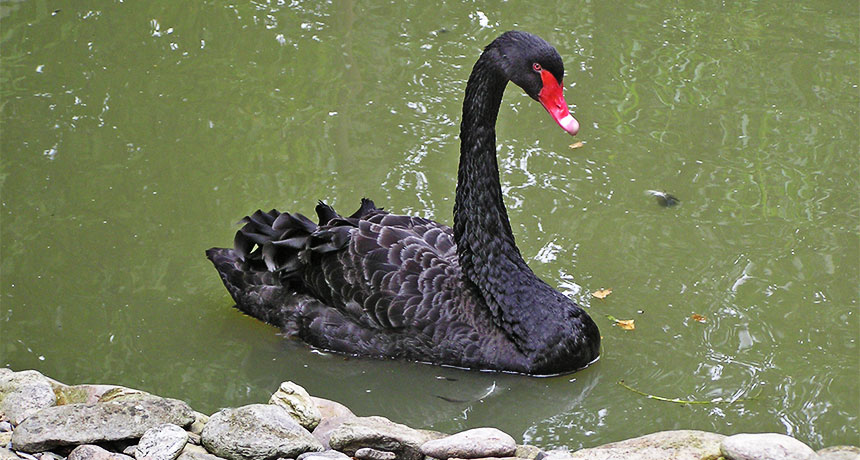Improbable ‘black swan’ events can devastate animal populations

Like black swans, black swan events are rare. But for animal populations, they can be devastating. That’s why conservation managers need to keep them in mind, a new study argues.
Wikimedia Commons
- More than 2 years ago
Sometimes, the improbable happens. The stock market crashes. A big earthquake shakes a city. A nuclear power plant has a meltdown. These seemingly unpredictable, rare incidents — dubbed black swan events — may be unlikely to happen on any specific day, but they do occur. And even though they may be rare, we take precautions. A smart investor balances their portfolio. A California homeowner stores an earthquake preparedness kit in the closet. A power plant designer builds in layers of safeguards.
Conservation managers should be doing the same thing, scientists warn. Black swan events happen among animals, too, and they rarely have positive effects, a new study finds.
How often do black swan events impact animals? To find out, Sean Anderson of the University of Washington in Seattle and colleagues looked at data for 609 populations of birds, mammals and insects. Often, the data were noisy; there could be lots of ups and downs in population sizes, not always with good explanations for what happened. But, Anderson notes, “it turns out that there are plenty of black swan events that are so extreme that we can easily detect them with available data.”
The researchers looked for upswings or declines that were so big they would be observed only once every 10,000 years. For example, the team found a population of gray herons in England that experienced large die-offs in the 1920s, ’40s and ’60s. Those declines were well outside the normal ups and downs found in the population. Harsh winters meant limited food availability for the birds, and the population crashed several times. “The last event actually involved population crashes two years in a row, and it took three times longer for the population to recover than expected,” Anderson notes.
About 4 percent of the populations in the study experienced a black swan event, the team reports in the March 21 Proceedings of the National Academy of Sciences. And this was usually a sharp decline in population size. That’s because there are limits to how fast a population can grow — organisms can only have so many babies per year. But there are no limits to how fast the members of a group can die.
Whether that 4 percent figure holds for the entire animal world is hard to tell. But it does confirm that these events do happen and that they are rarely good. And, given the nature of the events that disrupted populations, it’s possible they may become more common due to climate change.
“We found that most black swan events were caused by things like extreme climate or disease, and often an unexpected combination of factors,” Anderson says. Climate change is expected to increase the frequency and magnitude of events such as heat waves and drought. “We may observe more black swan events in animal populations in the future because of these climate extremes,” he says.
Conservationists can’t predict when such events will happen, but there are ways to minimize their impact when they do, Anderson and colleagues suggest. For animals, this could mean making sure a population doesn’t get so small that something like a disease outbreak — such as the one that happened with saiga antelope in 2015 — or a really bad winter results in extinction.
Editor’s note: This story was updated January 19, 2018, to correct the year of the saiga antelope die-off.






